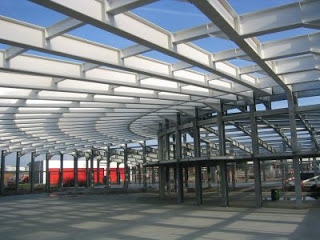In fact, the whole structure during the lifespan may only experience loading stresses far below the ultimate state and that is the reason why this method is called working stress approach. Under such scenario, the most economical design can hardly be obtained by using working stress approach which is now commonly used in the design of temporary works.
For limit state approach, for each material and load, a partial safety factor is assigned individually depending on the material properties and load properties. Therefore, each element of load and material properties is accurately assessed resulting in a more refined and accurate analysis of the structure.
In this connection, the material strength can be utilized to its maximum value during its lifespan and loads can be assessed with reasonable probability of occurrence. Limit state approach is commonly used for the majority of reinforced concrete design because it ensures the utilization of material strength with the lowest construction cost input.
Keywords for this post
difference between working stress and limit state method
difference between working stress method and limit state method of design
difference between working stress method and limit state method pdf
difference between limit state method and working stress method ppt
working stress method wiki
advantages of limit state method
working stress method of rcc design
working stress method definition

















